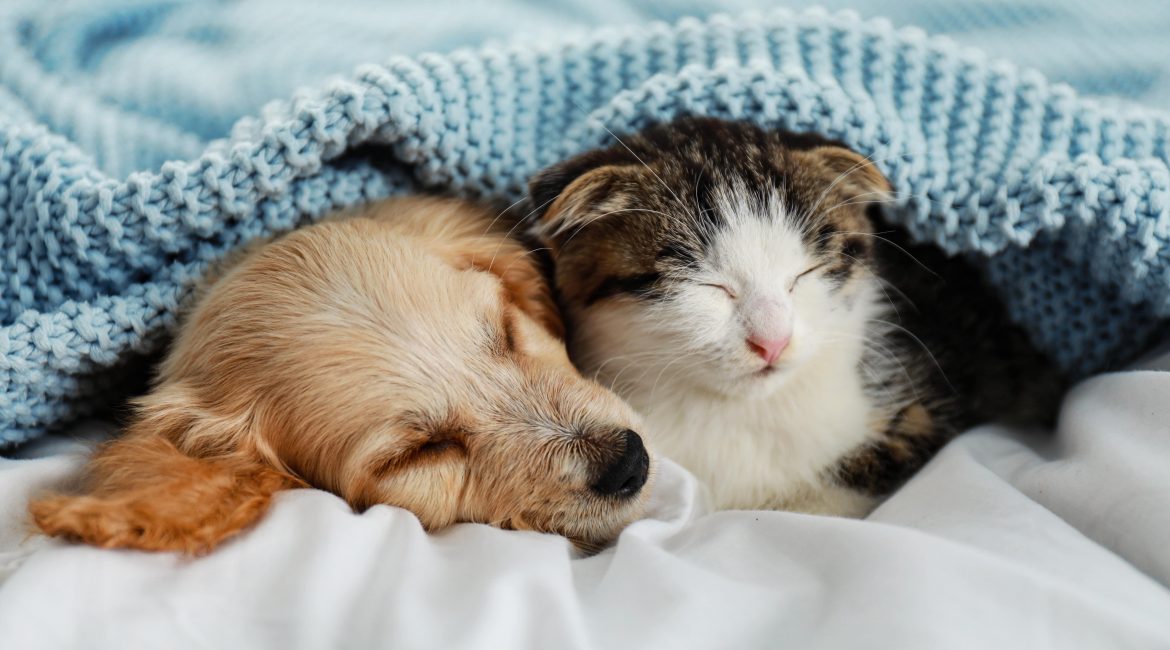Winter is in full swing, so we’re sharing everything you need to know about keeping pets warm in winter.
In South Africa, we are fortunate enough that our climates don’t tend to get too extreme most of the time, but there are some super chilly days and even the occasional snowfall (which we experienced this week!).
It takes time for our immune systems to adjust to new seasons – just think of the winter sniffles that come knocking when winter rolls around. We have the option to heat our rooms at night and keep our feet and heads warm with thick socks and beanies. We also have the responsibility to make sure our furry friends are equally bundled up and safe from the cold!
At Oneplan, there is one thing we’re more passionate about than pet insurance and that happens to be those four legged, tail-wagging, sloppy kissing cats and dogs.
We hope that these tips for keeping pets warm in winter will help make sure your fluffy friends can brave the cold in comfort!
Keeping Pets Warm in Winter
Pets can be quite affected by a change in temperature, so you need to keep an eye on any changes in your pet’s behaviour that relate to their energy levels and diet. Some people believe that dogs can handle any weather or environment due to their descent from wolves and possession of thick fur.
Whilst some dogs and cats have the disposition to function better in the cold than others, most pets will need their parents to help them keep warm.
An extra coat will help
Despite its warm and fuzzy appearance, fur isn’t as warm as you would think. Fur isn’t great for insulation or retaining heat, especially if your pet’s fur gets wet (this can end up being really dangerous in cold temperatures).
Short-haired dogs and cats are going to be more prone to feeling the cold and will need some assistance in the form of crazy-stupid-cute winter jackets and jerseys. This is all obviously dependent on the personality of your pet. If your animal is in distress, remove any tight or claustrophobic clothes and rather keep them warm with blankets and heaters.
You also need to remember not to leave your pet unsupervised in any winter gear. They run the risk of getting their jacket wet which could lead to hypothermia. There is also the chance of them getting caught or strangled on an object which is scary, so be vigilant!
Bring them inside
If it’s too cold for you to be outside, it’s too cold for your pet to be outside. Sure, some breeds are fanatical about the cold and will be happy to play in the chilly outdoors. Some outdoor cats will be too tricky to keep indoors, in which case you just need to give them a warm spot to come to when they’re good and ready!
Make sure that your home is winterproof, too! Keep blankets and cuddly spots available and make sure to place any winter products like antifreeze out of reach as this can be fatal for cats and dogs.
Visit the vet
Now would be a great time to get your pet to the vet, especially if you already know your pet suffers from a chronic illness or has a compromised immune system. If your pet suffers from heart disease, diabetes, or arthritis then the colder months may be more challenging for them.
If you have pet insurance, you won’t have to stress about the cost of these vet bills as they’ll be taken care of – meaning you can focus on making sure your pawfect pal gets the care they need.
With Oneplan, we upfront your vet visits and routine care benefits BEFORE you see the vet on your Onecard in literally 1 minute, and we also have no vet networks, so your pet can maintain their bond with their favourite vet. Most importantly, you can stock up on chronic care treatments for your pet, maybe even a super comfy Sealy dog bed from the Onepet Store and SAVE with up to 25% discount because you are a Oneplan Pet Parent.*
Keep exercising but keep it short
It is important to keep your pet active in the winter – more so dogs than cats. You should still go for walks but keep the distances short to avoid your dog getting sick or even hypothermic. To keep your dog warm during walks, it’s a good idea to put a jersey on them. Additionally, using non-slip booties can protect their paws from the cold ground.
Also, be aware of the time that you decide to go for a run or a walk. If it’s still dark outside in the morning it may be too cold for your dog. If you are running during early winter mornings with your dog, be sure to wear reflective gear in the dark!
Hypothermia Symptoms in Dogs and Cats
If your pet is left in the cold for too long, they can suffer a fatal drop in body temperature and suffer from hypothermia. These are the signs and symptoms your pet may be in shock and needs immediate care:
- lethargy
- muscle stiffness
- violent shivering
- listlessness
- body temperature below 36°C
- problems breathing
- lack of appetite
- weak pulse
- coma
- cardiac arrest
If your pet is showing any of the above symptoms, you should immediately wrap them in a warm blanket, towel, coat, or whatever you have nearby and get them to the vet for emergency treatment.
We know this may sound scary, but we just want to make sure that you are well-prepared to take care of your precious fur baby, no matter the weather!
Above all, don’t forget to give your pet lots of cuddles and snuggles this winter – because that’s the best way to keep them (and yourself) warm and cosy.
Your Pet Insurance Family,
Oneplan
*discounts applied to Oneplan Hospital, Classic and Super Pet Plan clients only.




